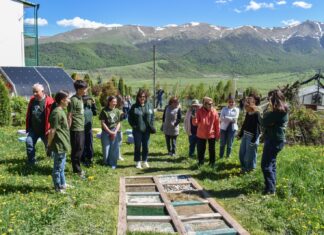By Laura Avetisyan
Hrant Dink, a prolific Armenian-Turkish journalist, activist and advocate for human rights and democracy, was shot to death in Istanbul on January 19, 2007. Hrant’s assassination sent aftershocks through Turkey, Armenia and beyond. Videos reposted on social media on the anniversary of the assassination in January 2024 ignited a new spark in me towards rediscovering Hrant, especially in the context of Armenia’s defeat in the 2020 second Karabakh war, and the ultimate loss of Karabakh in September 2023.
Disillusioned by the ever-victorious national narratives reigning over the Armenian republic, since its inception in the 1990s, Armenians are now struggling to redefine themselves. Unfortunately, no viable alternatives have yet appeared to replace the old narratives, people are yet again served rigid and extreme interpretations of what it means to be Armenian. Hrant was a rare thinker who believed in a version of Armenianness that didn’t have to be rigid, an Armenianness which was in touch with history but also in tune with the present; a creative and pragmatic leader, unafraid to grapple with the challenges of the time.
Hrant was a creative thinker, when it came to our identity and our cause, which our modern-day Armenian social and political life hopelessly lacks. Our pre-2020 idea of the national self was rigid — an ethnonational state, tied strongly to the Armenian church and anchored around the unity of Armenia, Artsakh and Diaspora. This conceptualization of the self was inflexible at its core, exclusive of those positioned outside of these bounds. Nowadays, we see extreme departures from the old narratives, without offering sustainable alternatives. Whilst the church held a central role in the past, now we see an active distancing away from the church. Regular standoffs between church and state representatives, refusals to attend religious events have become commonplace. We are also seeing a sharp move away from Artsakh, the idea and the reality of it. Whilst these moves are justified as negotiating steps in protection of Armenia, ideationally they create a cumbersome vacuum. For the past few years we have also seen a reshuffling of the idea of diaspora — starting from dismantlement of the diaspora ministry to the weakening of ties with key diaspora institutions. Whilst heavily criticized by multiple layers of the society, these acts are not inherently wrong. However, they do come in stark contrast to and rejection of the past, unsubstantiated and without an alternative.
Hrant was creative about our identity. In 1996, when Hrant founded Agos, the Turkish-Armenian community already had two other Armenian publications, Marmara and Jamanak. However, unlike Marmara and Jamanak, Agos decided to publish in Turkish, with only a two-page Armenian section. From an Armenian perspective, the decision to publish in Turkish, raised immediate alarm bells. “Why run an Armenian paper in Turkish? Why write about us in the language of a hostile nation? Why not instead write in Armenian and strengthen the diminishing role of our language and culture in Turkey?” However, Hrant thought differently. By writing in Turkish, Agos adopted a clear mission: to make the Armenian voice in Turkey heard in Turkish.
As Eydin Engin, a Turkish journalist and playwright put it; “Until Hrant, Turkish Armenians were a community which didn’t speak — they would only whisper. Hrant came and loudly started talking and announced that in 1915 there was an Armenian genocide. Hrant was killed because he was speaking up, and in a language that people understood.”








